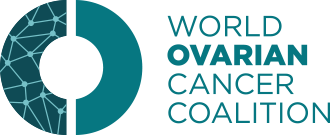
Ovarian Cancer Cost-of-Illness Study
The socioeconomic burden of ovarian cancer in 11 countries
The World Ovarian Cancer Coalition’s Ovarian Cancer Cost-of-Illness Study is the first to quantify the social and economic burden of ovarian cancer in 11 countries. The Study will assess the disease’s significant costs and define actions needed to improve survival and quality of life for ovarian cancer patients and their caregivers. Cost-of-illness studies are widely used in health economics to increase knowledge about the burden of diseases and drive policy decisions.
We are very pleased to say that the study has now been completed and we are now in the process of journal submission for publication later in 2024. The study abstract has been accepted for oral presentation at the Union for International Cancer Control’s (UICC) World Cancer Congress in Geneva in September 2024.
Background and approach
Ovarian cancer remains among the most aggressive tumours with the lowest survival probabilities. Projections are that ovarian cancer will claim more than 8 million lives from 2022 to 2050 without better prevention or control measures. It is hoped that results from this Study’s will allow the Coalition and our advocacy partners to engage policy makers in new ways and ultimately demonstrate the need to prioritise ovarian cancer at a global level.
Given their wide experience in doing cost-of-illness studies, we commissioned RTI International to carry out this mammoth undertaking. An Excel-based tool was built, that uses a prevalence-based cost-of-illness approach and a societal perspective to estimate the burden of ovarian cancer in four high-income and seven low- and middle-income countries.
Throughout the development of the costing tool, we had the added benefit of being able to leverage data from the Coalition’s 2018 Every Woman Study™ as well as the ongoing Every Woman Study™: Low- and Middle-Income Edition.
Tapping into our global network, we were also able to call upon key clinician experts in each of the eleven countries, whose insights proved valuable in assessing our approach and methodology.
What is the study going to provide us with
The micro-costing framework evaluates the resources and costs involved in providing care. It uses data from new systemic reviews and meta-analyses to estimate the impact of ovarian cancer on patient labour productivity outcomes and the time that caregivers devote to those living with the disease.
The Study will provide detailed data in the eleven countries: Australia, Canada, Colombia, India, Kazakhstan, Kenya, Malaysia, Malawi, Nigeria, UK, US, with the low- and middle-income countries mapping over some of the countries being explored in the Coalition’s Every Woman Study™: Low- and Middle-Income Edition. Looking at direct healthcare costs such as diagnosis, primary treatment, maintenance treatment and surveillance the Study will show how much this amounts to as a percentage of those countries’ total healthcare budget. In addition, the time spent by individuals (e.g. family members, informal carers), looking after ill women has been included. Ultimately, the Ovarian Cancer Cost-of-Illness Study will place a value on the thousands of lives lost to ovarian cancer in 2023 and in future years.
We expect to identify substantial socioeconomic costs affecting various groups in society. This will support our arguments outlined in previous briefings that it is imperative to collaborate on strategies to prevent ovarian cancer and diagnose it as quickly as possible, while also strengthening support for patients, caregivers, and health systems that face the disease.
